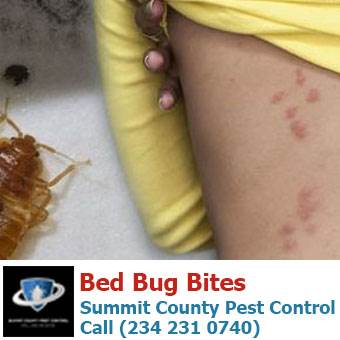Efficient A1 Bed Bug Treatment Houston - Get Rid of Bed Vermin
Efficient A1 Bed Bug Treatment Houston - Get Rid of Bed Vermin
Blog Article
Understanding the Lifecycle of Parasites for Targeted Control Techniques
Understanding the lifecycle of pests is an essential aspect of reliable insect management techniques. With a deeper understanding of how bugs prosper and progress, tailored control methods can be designed to address particular factors in their lifecycle, inevitably leading to even more successful pest management results.
Value of Understanding Parasite Lifecycle
Recognizing the lifecycle of parasites is essential for establishing reliable and targeted control approaches in insect monitoring. By comprehending the numerous phases an insect goes via from egg to grownup, bug control specialists can identify susceptible points in the lifecycle where treatment can be most effective.
In addition, identifying the particular environmental problems essential for each phase of the bug's lifecycle can guide decisions on environment adjustment or exclusion methods to disrupt the lifecycle and minimize pest populaces. This knowledge allows pest monitoring specialists to carry out aggressive measures as opposed to depending exclusively on responsive treatments, resulting in more sustainable and lasting insect control options. Eventually, a complete understanding of insect lifecycles encourages insect control professionals to customize their techniques effectively, decreasing ecological influences and optimizing control end results.
Secret Stages in Bug Advancement
To effectively execute targeted control methods in pest monitoring, a crucial element exists in adequately identifying and comprehending the crucial phases in parasite growth. Pest advancement usually consists of several vital phases that are important for their lifecycle and monitoring.

Vulnerabilities in Bug Lifecycle
Throughout the various phases of a pest's lifecycle, unique vulnerabilities arise that can be strategically targeted for reliable control actions. One crucial susceptability depends on the egg stage, where parasites are often extra vulnerable to specific insecticides or organic control representatives as a result of their soft outer shell, making them easier targets for treatment. In addition, the larval or nymph stage offers vulnerabilities as insects go through rapid development and growth, needing high energy intake that can be made use of by interrupting their food resources or introducing development inhibitors. Pupal stages, identified by immobility and transformation, provide a home window for targeted control through physical barriers or specific treatments that impede effective introduction. Adult parasites, while extra resilient due to their reproductive capacity, can still be prone during breeding or egg-laying tasks, which can be interrupted through scent traps or sterilization strategies. Recognizing these susceptabilities in the bug lifecycle is essential for creating effective and exact control methods that properly take care of bug populaces while lessening environmental impact.
Implementing Targeted Control Measures

Applying targeted control actions commonly entails a multi-faceted strategy. This might consist of environment alteration to make the environment much less friendly to insects, such as eliminating standing water for insect control or securing entry points for rodents. In addition, biological control approaches can be utilized, where all-natural use this link predators or pathogens are introduced to maintain pest populations in check.
Chemical control, such as the cautious resource application of chemicals, is an additional usual approach. However, it is important to make use of these compounds sensibly to minimize environmental influence and prospective damage to non-target types. Integrated Parasite Management (IPM) methods that incorporate numerous control procedures in a coordinated and lasting fashion are commonly one of the most efficient in accomplishing long-term bug monitoring objectives. By implementing targeted control procedures based on a detailed understanding of pest lifecycles, pest populations can be effectively managed while minimizing risks to human health and wellness and the atmosphere.
Improved Bug Monitoring Practices

Furthermore, the consolidation of biological control representatives, such as natural killers or virus of parasites, can help decrease reliance on chemical pesticides and promote a much more balanced ecological community. Applying physical obstacles and traps can also be part of improved insect monitoring techniques, using safe and targeted options for insect control. Additionally, making use of pheromones and other semiochemicals can interrupt pest breeding patterns and interaction, resulting in reduced insect populaces with time.
Final Thought
By recognizing vital phases in bug advancement and susceptabilities in their lifecycle, targeted control steps can be carried out to lessen this content parasite populaces. Boosted bug monitoring methods can aid lower the dependence on broad-spectrum chemicals and advertise even more lasting and environmentally pleasant bug control approaches.
Understanding the lifecycle of pests is crucial for developing efficient and targeted control strategies in parasite administration. By comprehending the various phases a bug goes with from egg to adult, parasite control experts can identify prone points in the lifecycle where treatment can be most successful. Eventually, a thorough understanding of parasite lifecycles encourages pest control professionals to customize their techniques successfully, minimizing ecological influences and maximizing control outcomes.
By executing targeted control actions based on a detailed understanding of bug lifecycles, pest populations can be efficiently managed while decreasing threats to human wellness and the atmosphere.
By identifying essential phases in pest growth and vulnerabilities in their lifecycle, targeted control actions can be carried out to reduce parasite populations.
Report this page